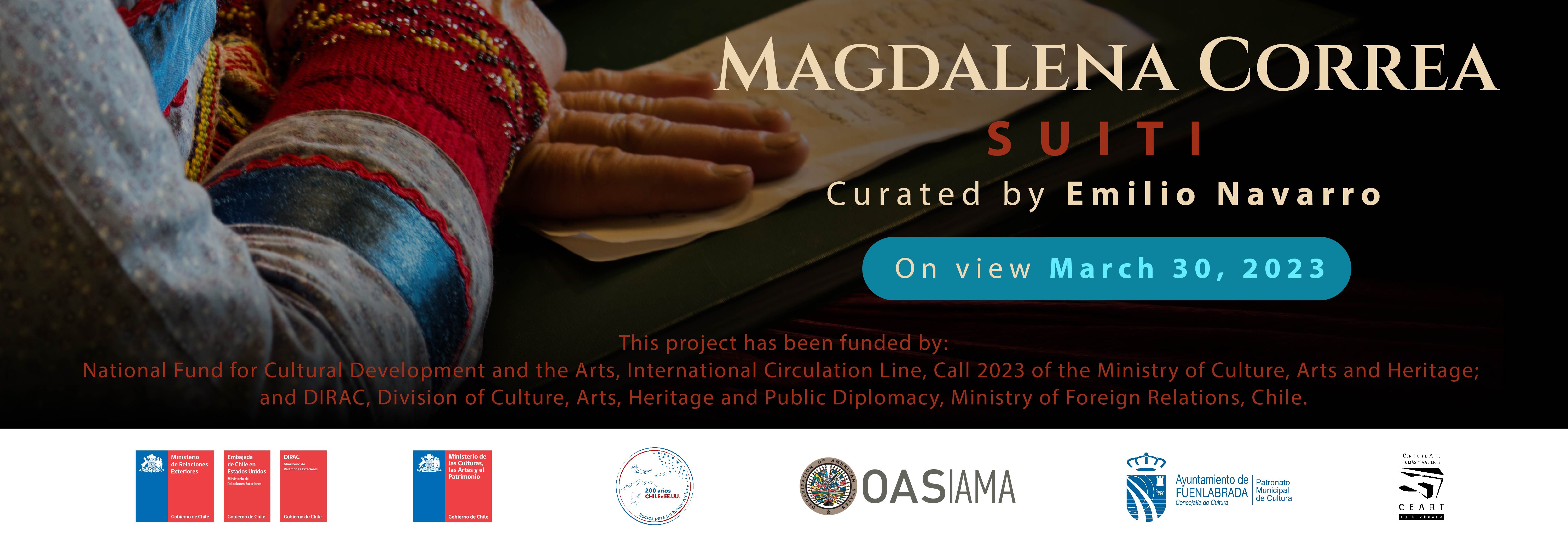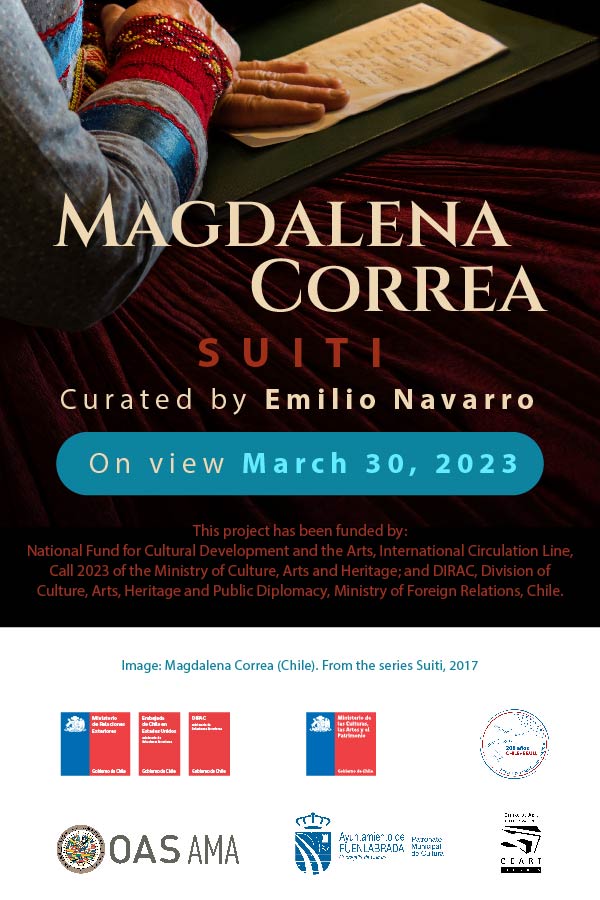Magdalena Correa
Suiti
On view
March 30-June 4, 2023
HOURS
Tuesday-Sunday 10AM-5PM
LOCATION
OAS AMA | Art Museum of the Americas
Washington, DC
20006
The OAS AMA | Art Museum of the Americas, the Permanent
Mission of Chile to the OAS and the Embassy of Chile in the United
States announces Suiti, an exhibition of photography and video work
by Chilean multimedia artist Magdalena Correa. Curated by Emilio
Navarro, Suiti is made up of a set of photographic and video shots
that the artist took in 2017 during her stay in Latvia and her
coexistence with the town that lends its name to the project. A mode
of Catholic culture, intangible heritage of Humanity, which lives in
isolation within a territory with a Lutheran majority.
Continuing along the lines of her previous works, the artist
integrates into the communal nucleus of the inhabitants of this
culture, and through her lens manages to build a suggestive
narrative of an aesthetic nature, often incomplete or interrupted,
that seeks to move away from the document. and invite the viewer to
add their own disquisitions about the images they see.
In Carlos Jiménéz's
"Magdalena Correa: The Endless Journey of
Searching for Herself," he writes that she is
"an experiential
artist, which in this case, refers to the fact that a crucial part
of her work is the result of her experiences in some of the most
inhospitable places on the planet. The deserts of Atacama in Chile,
the Gobi in Mongolia, and La Guajira in Colombia, as well as the
Antarctic and the Peruvian Andes, host to the highest gold mine in
the world, are some of the destinations chosen by someone who seems
to be ruled by the intense desire to search for experiences that are
as extreme as possible, both in terms of the natural environment and
the human experiences that it shapes."
Correa states
that "I am interested in exploring those territories undergoing a
situation of isolation, precariousness and oblivion. Places with a
form of unstable human life, which also have put up with the harsh
conditions imposed by the power of nature. I like pausing and
looking at geographical and human isolation and unknown spaces that
coexist with our everyday life, but that are beyond our everyday
worries since our lives are based on comfort, and so we do not need
to be concerned with them as, in many cases, due to their
inaccessibility, they simply do not appear on maps."
Magdalena Correa has specialized in photographic and video research
projects on isolated and extreme territories inhabited by humans,
such as: Austral (2006) about the XI Region of Aysén in the South
of Chile; La Desaparición (2008) on the deserts of Gobi in China
and Mongolia and the Atacama Desert in the North of Chile; Níveo
(2011) about the Chilean village Villa Las Estrellas located in
Antarctica; La Rinconada (2013) about the highest gold mine in the
world located at 5. 600 metres above sea level in the District of
Ananea, Peru; Luxury has a new Address (2014) about the wealth and
ostentation of the Kuwaiti society; "Wayúu" (2015) about the Wayúu
ethnic group located in the desert of Alta Guajira, Colombia; and,
"Suiti" (2019) about the Suiti culture (Alsunga, Latvia), a Unesco
intangible heritage on the verge of extinction.
She has held solo exhibitions in numerous
institutions and museums, including: Palacio de la Virreina,
Barcelona, Spain; Casa Asia, Barcelona, Spain; Fundación Telefónica,
Chile; Fundación Telefónica, Buenos Aires, Argentina; Instituto
Cervantes de Pekin, China; Instituto Cervantes de Chicago, USA;
Instituto Cervantes de Sao Paulo, Brazil;
Centro de Arte y Naturaleza de Huesca, Spain; Museo de Bellas Artes
de Santander, Spain; Centro de Arte Caja de Burgos, Spain; Museo de
Bellas Artes de Santiago de Chile; Museo de Arte Contemporáneo de
Santiago de Chile; Museo Da Casa Brasileira, Sao Paulo, Brazil;
(CAF) Centro Andaluz de la Fotografía, Almería, Spain; Centro de
Arte de Alcobendas, Madrid, Spain; Casa América, Madrid, Spain;
Museo Laboratorio, Pescara, Italy; Casal de Solleric, Palma de
Mallorca, Spain; and, CEART, Centro de Arte Tomás y Valiente,
Fuenlabrada, Madrid.
Emilio
Navarro is a curator of contemporary art exhibitions. Between 1979
and 1986, he worked as an assistant at the Kreisler Gallery in
Madrid. In 1987, he founded his own gallery in Madrid dedicated to
the dissemination of contemporary artistic trends. From 1999 to
2001, he directed three consecutive editions of the "Transit"
International Art Fair in Toledo. In 2003, he joined the Caja de
Burgos team to launch the CAB, Caja de Burgos Art Center. From
October 2003 to December 2006, he served as Deputy Director of the
Center and from January 2007 to November 2015 as Director. He has
curated numerous individual exhibitions of international artists. He
has participated as a lecturer and published texts related to
artists and contemporary aesthetics and as a jury in various
artistic competitions.


